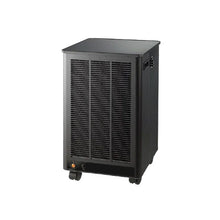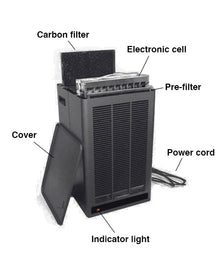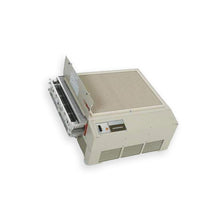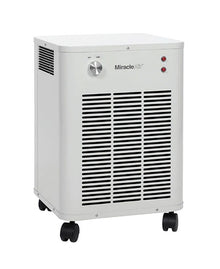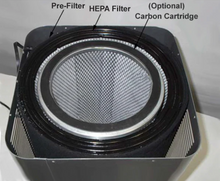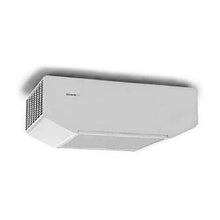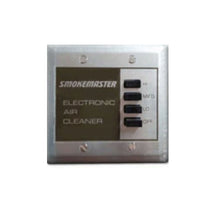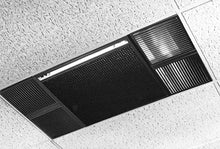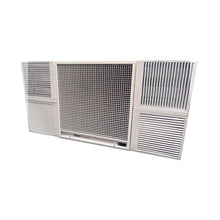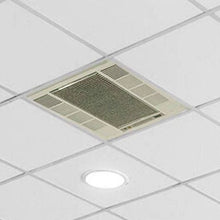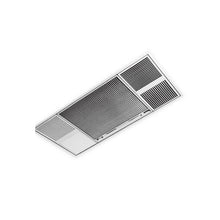Specialized Filtration: Tackling Tobacco Tar and Nicotine Residue in Your Commercial Space

The lingering smell of tobacco smoke, that sticky film on surfaces, and the pervasive yellowing — these are more than just nuisances in a commercial environment. They are tell-tale signs of tobacco tar and nicotine residue, persistent pollutants that can deter customers, compromise employee health, and even damage your property. At Commercial Air Purifiers, LLC, we understand the unique challenges businesses face in maintaining truly clean and healthy indoor air, especially when confronted with the stubborn byproducts of tobacco smoke. This article delves into the specific issues posed by tobacco tar and nicotine, and how specialized air filtration solutions can transform your commercial space from a smoke-saturated environment into a fresh, inviting atmosphere.
The Invisible Invader: Understanding Tobacco Tar and Nicotine Residue
Tobacco smoke is a complex cocktail of thousands of chemicals, many of which are harmful to human health. When we talk about "residue," we're primarily referring to the particulate matter and gaseous compounds that settle out of the air. Nicotine, a highly addictive chemical, readily vaporizes and then condenses onto surfaces, creating a sticky film. Tobacco tar, a visible brownish-yellow substance, is the particulate matter that comprises many of the solid and liquid components of tobacco smoke. It's essentially the condensed smoke itself, laden with carcinogens and irritants.
These residues aren't just an aesthetic problem. They continually off-gas into the air, contributing to persistent odors and poor indoor air quality. A study published in Environmental Science & Technology highlighted the significant contribution of "thirdhand smoke" (the residue left behind from tobacco smoke) to indoor air pollution, even long after smoking has ceased. This means that even if smoking is no longer permitted on your premises, the remnants can continue to impact air quality and health. For businesses, this translates to potential health risks for employees and customers, decreased comfort, and a negative perception of your establishment. From restaurants and bars that previously allowed smoking to dedicated smoking lounges and even properties impacted by past tenants, the challenge of tobacco tar removal air purifier systems and effective nicotine residue air filtration is a pressing concern.
The Health and Business Impact of Lingering Smoke
The health implications of exposure to tobacco smoke, even in its residual form, are well-documented. The U.S. Environmental Protection Agency (EPA) classifies secondhand smoke as a Group A human carcinogen, meaning there's sufficient evidence to conclude that it causes cancer in humans. While thirdhand smoke research is ongoing, initial findings suggest that the chemicals in tobacco residue can react with indoor pollutants to form new, more harmful compounds. For employees, prolonged exposure can lead to respiratory issues, headaches, and increased risk of serious diseases. For customers, a smoky environment can be a significant deterrent, impacting foot traffic and overall business.
Beyond health, the financial implications are considerable. Businesses often incur significant cleaning costs to remove tar and nicotine stains from walls, furniture, and fixtures. The constant battle against odors can also necessitate frequent airing out, repainting, and even replacing contaminated items. Moreover, a commercial space perpetually smelling of stale smoke sends a clear message about its air quality, potentially driving away clientele who prioritize a clean and fresh environment. This is where the need for heavy duty smoke filter business solutions becomes apparent, offering a long-term strategy for maintaining a healthier and more appealing space.
Specialized Filtration: The Solution for Tobacco Tar and Nicotine
Traditional air purifiers, while effective against dust and allergens, often fall short when it comes to the unique challenges of tobacco smoke. The key lies in specialized filtration technologies designed to tackle both the particulate matter (tar) and the gaseous compounds (nicotine and other volatile organic compounds or VOCs).
Multi-Stage Filtration: A Comprehensive Approach
Effective commercial air cleaner tobacco solutions employ a multi-stage filtration process, each stage targeting different components of tobacco smoke:
-
Pre-filtration: The first line of defense, pre-filters capture larger particles like dust, pet dander, and some larger smoke particulates. This extends the life of subsequent, more sensitive filters. For a business dealing with heavy smoke, a robust, washable pre-filter can significantly reduce maintenance needs.
-
Activated Carbon Filtration: This is the workhorse for gaseous pollutants. Activated carbon is a highly porous material with a vast surface area that can adsorb (trap) gases, odors, and VOCs. Nicotine, being a volatile organic compound, is effectively captured by activated carbon. The more carbon, and the higher its quality, the more effective it will be at removing persistent smoke odors and off-gassing residues. For spaces with significant tobacco smoke, a deep bed of activated carbon, or multiple activated carbon filters, is crucial. Our experience at Commercial Air Purifiers, LLC has shown that for heavy smoke environments, the sheer volume of activated carbon is a primary determinant of a system's effectiveness and longevity.
-
HEPA Filtration: High-Efficiency Particulate Air (HEPA) filters are essential for capturing microscopic particulate matter, including the fine particles of tobacco tar. A true HEPA filter can capture 99.97% of airborne particles as small as 0.3 microns. While tar particles can vary in size, HEPA filters are highly effective at trapping the airborne components that contribute to the sticky residue and poor air quality. Combining HEPA with activated carbon ensures a comprehensive attack on both visible and invisible smoke components.
-
Optional Technologies (UV-C, Photocatalytic Oxidation - PCO): Some advanced commercial air purifiers also integrate UV-C light or PCO technology. UV-C can neutralize airborne bacteria and viruses, while PCO uses UV light and a catalyst to break down VOCs into harmless substances. While not directly targeting tar or nicotine, these technologies can further enhance overall air quality by addressing other common indoor air pollutants and potentially breaking down some of the more complex VOCs associated with tobacco smoke residue.
The Science Behind the Clean: Adsorption and Impaction
The effectiveness of these filters lies in fundamental scientific principles. Activated carbon works through adsorption, where gas molecules stick to the surface of the carbon. This is different from absorption, where a substance is taken into another. The vast network of pores in activated carbon provides an immense surface area for these molecules to bind to. For example, a single pound of activated carbon can have a surface area equivalent to several football fields. HEPA filters, on the other hand, rely on mechanical filtration processes like impaction, interception, and diffusion to trap particles as air passes through their dense network of fibers. Larger particles impact the fibers directly, medium-sized particles are intercepted as they flow past, and tiny particles, due to their Brownian motion, diffuse and eventually collide with a fiber.
Real-World Impact: Case Studies and Business Transformations
Consider a historic cigar lounge that, despite its charm, struggled with the pervasive smell of stale smoke. Traditional cleaning methods offered only temporary relief. By implementing a multi-stage heavy duty smoke filter business solution with substantial activated carbon and HEPA filtration, the lounge was able to achieve a dramatic improvement in air quality. Customers reported a noticeable difference in freshness, and the frequent need for deep cleaning to remove tar and nicotine film was significantly reduced. This not only improved the customer experience but also lowered operational costs.
Another example is a hotel that wanted to convert some of its previously smoking-designated rooms into non-smoking rooms. Even after thorough cleaning and repainting, the residual odor persisted. By deploying specialized tobacco tar removal air purifier units in these rooms for an extended period, the hotel was able to effectively neutralize the lingering smoke and nicotine odors, making the rooms truly fresh and appealing to non-smoking guests. This demonstrated how targeted air purification can reclaim and revitalize spaces previously thought to be irrevocably tainted by smoke. Our ongoing conversations with business owners reveal that these types of transformations are not just about aesthetics; they are about creating healthier, more inviting environments that directly impact customer satisfaction and employee well-being.
Choosing the Right Commercial Air Cleaner for Tobacco Smoke
Selecting the appropriate air purification system for your commercial space requires careful consideration. It's not a one-size-fits-all solution.
-
Assess Your Needs: How severe is the smoke issue? Is it ongoing (e.g., a cigar lounge) or residual (e.g., a former smoking area)? The intensity and duration of smoke exposure will dictate the required filtration capacity.
-
Cubic Feet Per Minute (CFM): This metric indicates how much air an air purifier can process per minute. You'll need to calculate the cubic footage of your space (length x width x height) and aim for an air purifier with a CFM rating that allows for several air changes per hour (ACH) in your specific environment. For heavy smoke, a higher ACH rate (e.g., 6-10 ACH) is often recommended to ensure rapid removal of pollutants.
-
Filter Quality and Quantity: As Commercial Air Purifiers, LLC, we cannot overstate the importance of filter quality. For tobacco smoke, prioritize systems with a substantial amount of high-grade activated carbon. Look for units that clearly specify the weight of the carbon media, as this is a key indicator of its effectiveness against VOCs and odors like nicotine. Similarly, ensure the HEPA filter is a true HEPA (meeting the 99.97% at 0.3 microns standard).
-
Durability and Maintenance: Commercial environments demand robust equipment. Consider units designed for continuous operation and ease of filter replacement. Factor in the cost and frequency of filter changes, as this is an ongoing operational expense.
-
Noise Levels: While performance is paramount, noise can be a concern in certain commercial settings, such as restaurants or offices. Look for models that offer a balance between powerful filtration and acceptable noise levels.
-
Expert Consultation: Don't hesitate to seek advice from specialists. As Commercial Air Purifiers, LLC, we routinely help businesses assess their unique situations and recommend tailored solutions. Our expertise in commercial air cleaner tobacco applications means we can guide you through the complexities of filtration technology to find the most effective and cost-efficient system for your needs.
The Credible Conclusion: A Breath of Fresh Air for Your Business
The challenges posed by tobacco tar and nicotine residue in commercial spaces are significant, impacting health, aesthetics, and ultimately, your bottom line. However, with the right specialized filtration strategies, these challenges are entirely surmountable. By investing in tobacco tar removal air purifier systems and effective nicotine residue air filtration units, businesses can move beyond temporary fixes and achieve lasting improvements in indoor air quality.
At Commercial Air Purifiers, LLC, we believe that truly clean air is not a luxury but a necessity for any thriving commercial establishment. Our commitment is to provide solutions that not only address immediate problems but also contribute to a healthier, more inviting environment for everyone who walks through your doors. By choosing high-quality, specialized air purification, you're not just clearing the air; you're investing in the well-being of your employees, the satisfaction of your customers, and the long-term success of your business. Take the proactive step to transform your commercial space into a clean, fresh, and welcoming haven – a true breath of fresh air.
Frequently Asked Questions (FAQ)
Q: How long does it take for an air purifier to remove tobacco smoke odor?
A: The time it takes depends on several factors: the size of the space, the intensity of the smoke, the CFM rating of the air purifier, and the quality of its filters (especially activated carbon). For ongoing smoke, continuous operation is needed. For residual odors, a powerful commercial unit can significantly reduce odors within hours, but complete removal of embedded odors might take days or even weeks of continuous operation, alongside thorough cleaning of surfaces.
Q: Can a regular home air purifier handle commercial tobacco smoke?
A: Generally, no. Home air purifiers are designed for much smaller spaces and typically do not have the robust filtration capacity (especially the volume of activated carbon) required to effectively combat heavy commercial tobacco smoke, tar, and nicotine residue. Commercial-grade units are built for durability and higher air processing volumes necessary for business environments.
Q: Do air purifiers eliminate the need for cleaning surfaces affected by tar and nicotine?
A: Air purifiers significantly reduce airborne tar and nicotine, thus preventing new accumulation and off-gassing. However, they do not remove existing residue that has already settled on surfaces. Thorough cleaning of walls, furniture, and other surfaces is still necessary to remove accumulated tar and nicotine film for a truly clean environment. Air purifiers work best in conjunction with a comprehensive cleaning regimen.
Q: How often do I need to change the filters in a commercial smoke air purifier?
A: Filter life varies greatly depending on the amount of smoke, the operating hours, and the specific filter type. For heavy tobacco smoke environments, pre-filters might need to be cleaned or replaced monthly, while activated carbon and HEPA filters could last anywhere from 3 to 12 months. It's crucial to monitor filter indicators and follow the manufacturer's recommendations to ensure optimal performance.
Q: Are there any specific certifications I should look for in a commercial air purifier for tobacco smoke?
A: Look for systems that use True HEPA filters (meeting the 99.97% at 0.3 microns standard). While there isn't a single "tobacco smoke" certification for air purifiers, reputable manufacturers will provide clear specifications on CFM, filter types, and the amount of activated carbon used. Some units may be CADR (Clean Air Delivery Rate) certified, which indicates their effectiveness for removing smoke, dust, and pollen. Always check the manufacturer's data and consult with air purification specialists.
Author Biography: This article was crafted by the expert team at Commercial Air Purifiers, LLC. With years of experience in providing leading-edge air purification solutions to businesses across various industries, we are dedicated to improving indoor air quality through advanced technology and unparalleled customer support. Our mission is to empower businesses with the knowledge and tools to create healthier, more productive, and more inviting environments.
Publication Date: July 25, 2025
Sources:
-
Matt. (2014, October 23). A deeper look at what is thirdhand smoke and what are the effects on human health. National Center for Biotechnology Information. Retrieved from https://www.ncbi.nlm.nih.gov/pmc/articles/PMC4205560/
-
U.S. Environmental Protection Agency. (n.d.). Secondhand Smoke (SHS) Facts. Retrieved from https://www.epa.gov/indoor-air-quality-iaq/secondhand-smoke-shs-facts

